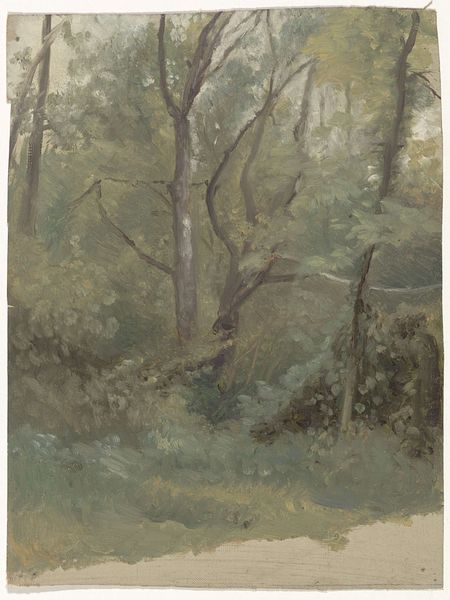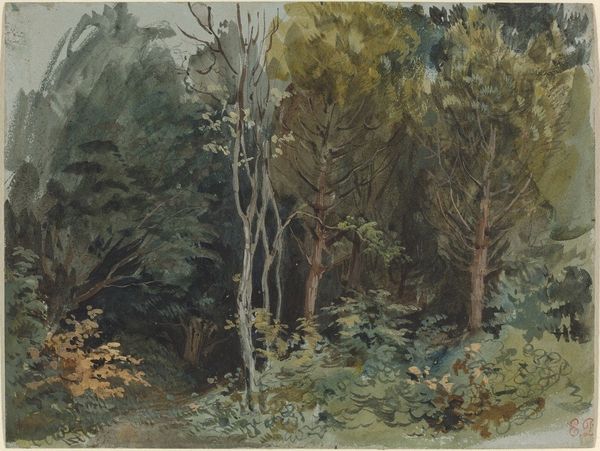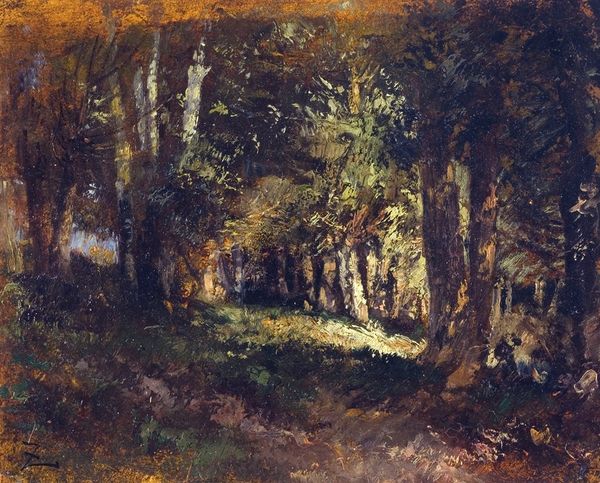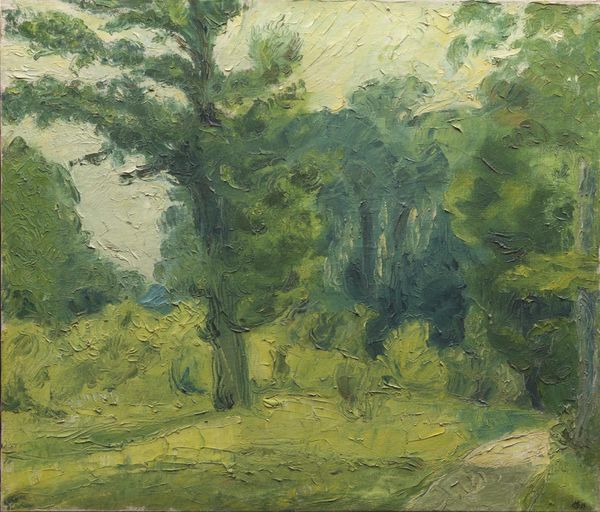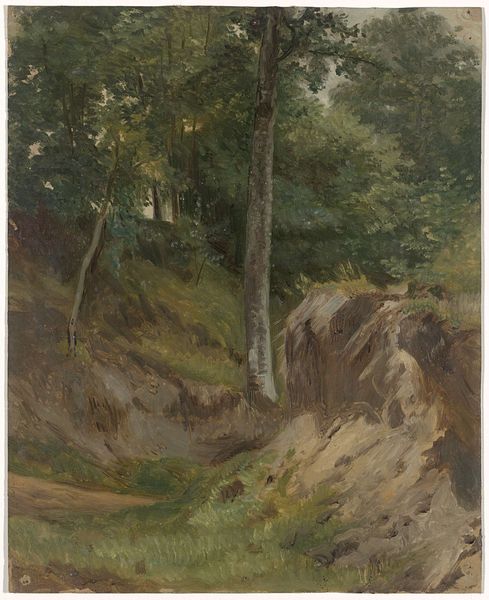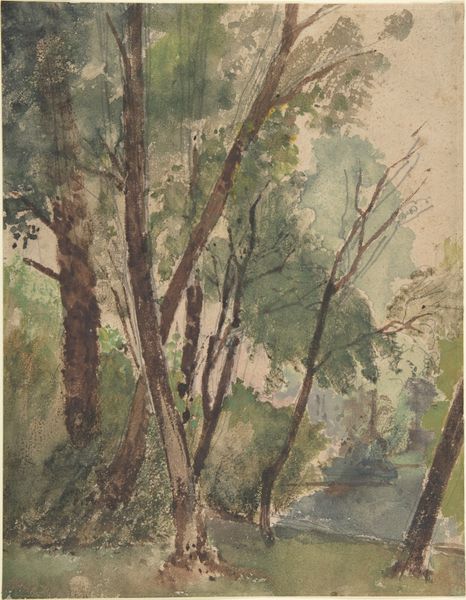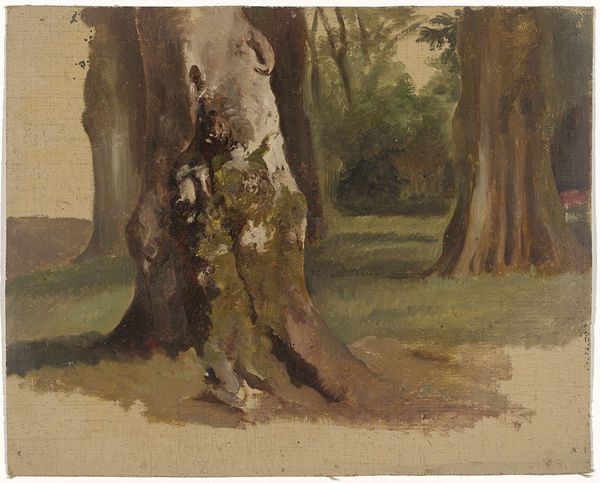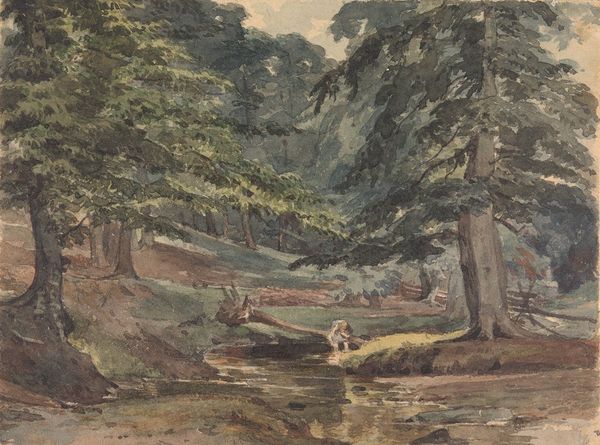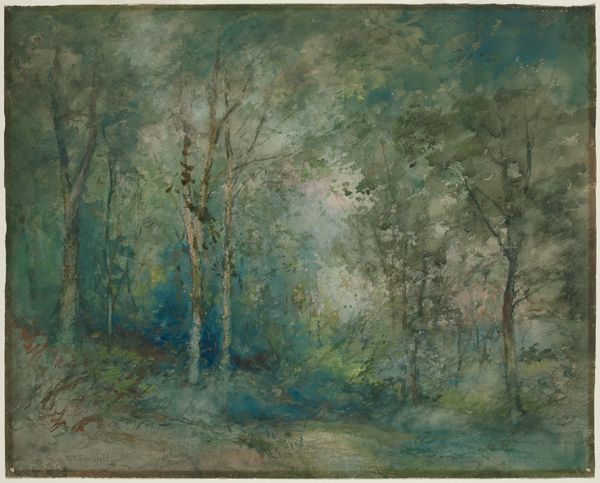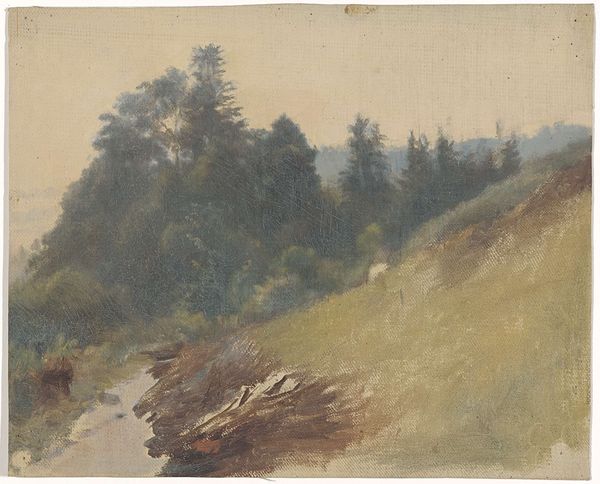
Dimensions: height 268 mm, width 325 mm
Copyright: Rijks Museum: Open Domain
Editor: This is "Bosweg" by Guillaume Anne van der Brugghen, made sometime between 1821 and 1891. It's an oil painting showing a path leading into a forest. The palette is very muted and it feels like a place of quiet contemplation. What sort of themes or cultural memories do you see reflected here? Curator: Well, the path itself is an immediate symbol. It invites us into the subconscious, that unknown space within the self. Note the realism of the brushstrokes juxtaposed with a sort of dreamy, almost romantic atmosphere. What do you suppose the artist intended the viewer to experience on this journey? Editor: Perhaps a sense of discovering something hidden? The way the light filters through the trees hints at something beyond what's immediately visible. Curator: Precisely! And think about the historical context. During that time, there was a growing fascination with nature as a source of spiritual renewal, especially in the wake of rapid industrialization. The forest, then, becomes a space of refuge. Do you see any element of realism clashing with the symbolic value? Editor: I do, actually. The everyday details in the forest trees feel very observed and accurately represented which might seem at odds with a quest for an abstract "spiritual" experience. Curator: Interesting! Perhaps it suggests that the spiritual isn’t separate from the mundane, but embedded within it? It’s an invitation to see the extraordinary in the ordinary, a cultural memory rekindled with each viewing. Editor: That’s a fascinating perspective. I’m now seeing how the artist encourages us to find meaning in everyday experiences rather than seeking something fantastical. Curator: Indeed. And I see now how easily a journey into self becomes universal through an iconic visual such as this.
Comments
No comments
Be the first to comment and join the conversation on the ultimate creative platform.

